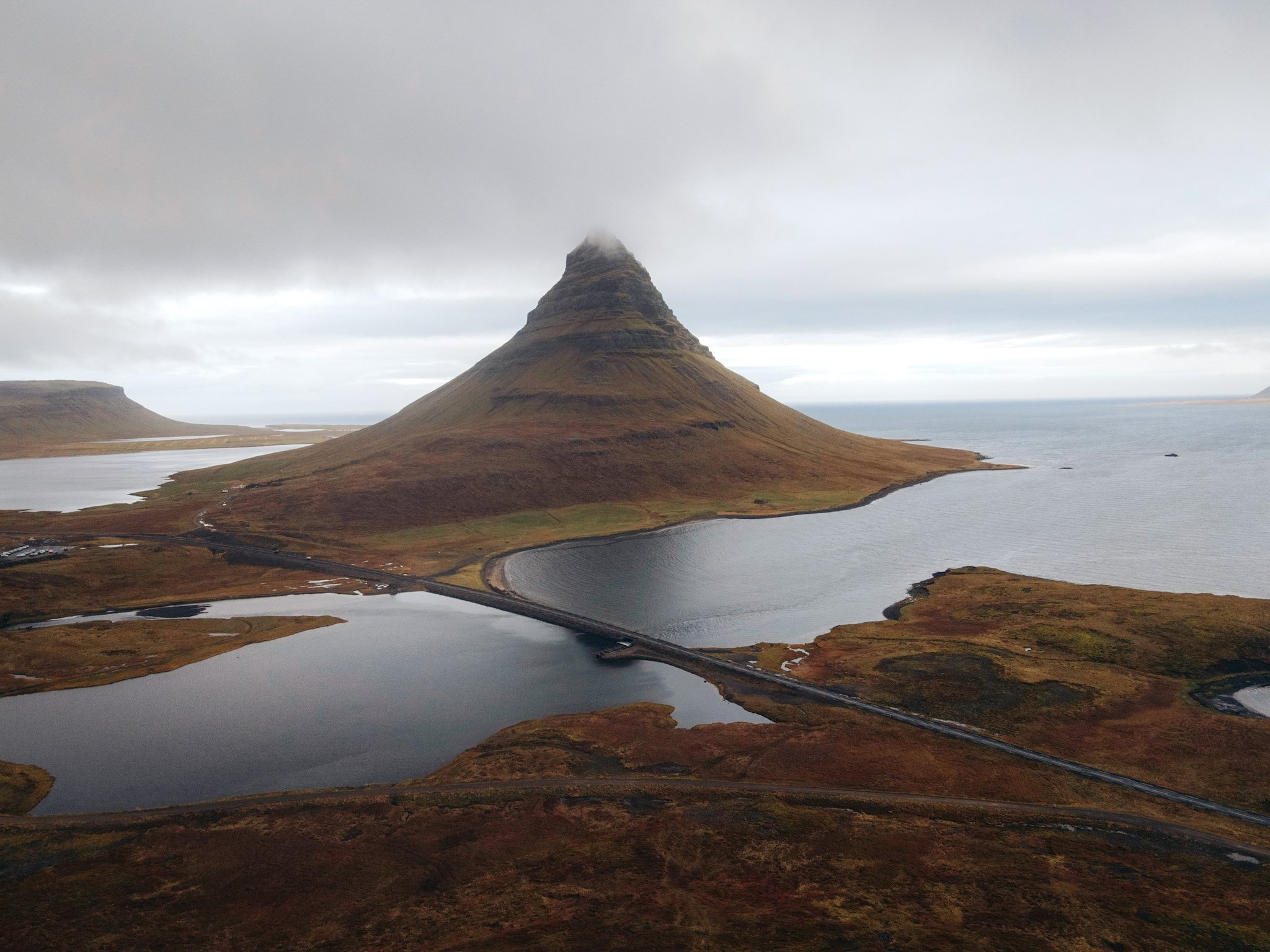
Travelling Solo to Iceland: The Ultimate Guide
Iceland is one of the most incredible countries I’ve ever visited. I decided to spend 12 days in the country, thinking that I would do it well and not need to revisit. Two days into the trip, I was already planning when my next trip to Iceland could be.
View from Hallgrimskirkja cathedral, Reykjavik
Sky Lagoon, Reykjavik
Is Iceland safe for solo female travellers?
Yes!! Iceland is one of the safest countries I have ever been to. In fact, I felt more safe travelling around Iceland than I do at home in Perth, Australia. If you have never done a solo trip before, Iceland is the perfect destination for you! Here are some of the things I loved about travelling around Iceland:
Icelanders speak fluent English - to the point where I forgot that it is their second language. This is a massive bonus when travelling alone as it’s one less thing to stress about.
The level of organisation in Iceland is insane! I love an organised country (hello Japan) and was so incredibly impressed with the level of customer service, communication and ease of booking/planning.
The roads are really easy to navigate and felt very safe. However, please be careful if visiting in winter if you’re not experienced driving in snowy/icy conditions. In summer you will have no issues and will easily be able to explore the entire ring road without any worries!
Phone service/data was great around the island. If you’re renting with CampEasy (please do!) all rentals include an iPad with a sim card. I’m not sponsored/affiliated - I genuinely just loved the service! This can be used all around the island for maps, weather, road conditions, bookings and messaging the staff at CampEasy - my trip a breeze with this trusty little sidekick.
Mulagljufur Canyon
When to visit Iceland
The best time to visit Iceland depends on what you want to experience during your trip. Iceland is a country of dramatic contrasts, with long summer days and short winter nights, so here are a few things to consider:
Summer (June to August): This is the warmest time of year in Iceland, with long days and mild temperatures. The midnight sun is visible in the northern parts of the country, making it a great time to explore the country's natural beauty and photograph the extended golden hour. However, this is also the peak tourist season, so expect crowds and higher prices.
Spring (April to May): This is a good time to visit Iceland to experience the country's stunning waterfalls and spring wildflowers in full bloom. Additionally, the Northern Lights are still visible in the evenings, making it an excellent time for aurora hunting.
Autumn (September to October): Autumn is a good time to visit Iceland if you want to experience the country's natural beauty without the crowds. The colours of the autumn leaves and the northern lights make for stunning scenery.
Winter (November to March): Winter in Iceland can be harsh, with short days and frequent snowstorms, but it's also the best time to see the Northern Lights. The Winter Solstice in December is a magical time to visit Iceland and see the incredible light shows at the Solstice Festival in Reykjavik.
I visited in Autumn (end of September/start of October), which was great for me as it was slightly cheaper and quieter. It also meant I had the opportunity to see the northern lights whilst still being able to do hikes. Overall, it was a good balance and perfect for driving the ring road. Next time, I’d love to go back in the middle of summer, rent a 4WD and explore the highlands.
Northern lights viewed from Eskifjörður
How long to stay in Iceland
As long as you can! Even with only a few days, you can see the highlights of southern Iceland – the spectacular waterfalls. With more time you can drive the ring road and explore some of the quieter areas and beautiful fjords. If you’re lucky enough to have weeks available, head into the highlands.
To give you an idea of what you can do in Iceland, I’ve prepared some sample itineraries for 4, 7 and 10 days. If you’re doing a quick trip to Reykjavik, check out my weekend guide.
How to get around Iceland
To and From Reykjavik
For solo travellers, I’d recommend the Flybus. If you’re staying in Reykjavik for a couple of nights, it’s cheaper than hiring a car and you can purchase an option for a shuttle to your hotel. Note - the shuttles only take you to set stops so you might have to walk a little to get to your accommodation. If you’re going in winter, I’d check the bus stop locations and pick accommodation close by.
For couples or groups, it might be cheaper to pick up a car directly from the airport rather than paying for multiple Skybus tickets. Reykjavik is a pretty small city so it’s easy to navigate.
Around Iceland
Rent a campervan! Iceland is really well set up for camping - it’s easy to navigate and the campgrounds are amazing. If you’re getting a campervan, make sure to rent from CampEasy! I’m not affiliated with or sponsored by them, but I’ve rented many cars/campers over the years, and CampEasy was hands down the best experience I have ever had. All rentals include a tablet with cellular data for GPS navigation, weather forecasts, road conditions, aurora forecasts, campsite information and things to see/do. I used this every day to plan my itinerary and found it incredibly useful!
I rented the Easy Small and it was perfect for 1 person - it’s the size of a standard car so it was easy to navigate around the towns and busy tourist locations. However, for couples, I would probably recommend going a bit larger!
Campsite Ólafsvík
Do you need to book campgrounds in advance?
I received conflicting information on this topic. I read that there is no need to book as there is always sufficient space at the campgrounds - even in summer. However, when I was actually there, I noticed that some places required booking. Based on my research and experience, I’ve come to the following conclusions:
Winter, Spring and Autumn: No need to book, however, there are limited campgrounds open this time of the year so make sure you check the opening dates online.
Summer: My research suggests that booking isn’t required, however, I did notice that some places were relatively small. So if your heart is set on a specific spot, I’d book it! If not, plenty of places are open this time of the year so I don’t think there will be a problem.
Skaftafell Campground
Is it easy to drive the ring road as a solo traveller?
Yes, Iceland is the perfect country to do a solo road trip! I love renting cars/campers when travelling due to the freedom it provides, however, I can be a nervous driver at times and will avoid driving if the road rules are significantly different to Australia or if the rule is “anything goes” (Asia, I’m looking at you). Iceland is a piece of cake compared to all the other countries that I have travelled to. The roads are high quality, the signage is excellent and the main tourist spots have ample parking provided (at a cost). Not to mention that there are more tourists than locals on the roads so everyone is patient and understanding. Also, if you rent with CampEasy, your tablet will be your trustworthy passenger - who needs a partner when you have GPS navigation?!
The only time I was nervous driving in Iceland was when it unexpectedly snowed. I have no experience driving in ice/snow and was worried that it was too early in the season to have winter tyres (I’d read they get switched in November). When I woke up one morning surrounded by snow, I messaged the staff at CampEasy and after sending some photos of the tyres, they confirmed that I did indeed have winter tyres and was good to go. This confirmation gave me all the confidence I needed to continue the road trip.
One thing to note is that fuel/gas is incredibly expensive! It can’t be avoided, so if you’re a solo traveller covering the entire cost, this is definitely something to work into your budget planning.
Kirkjufell
How to get a SIM card in Iceland
You can buy a local SIM card when you arrive in Iceland - Simmin is the most recommended in terms of coverage. However, over the years I’ve found it increasingly annoying to switch out SIM cards and attempt not to lose your personal SIM - happy days if you have a dual SIM phone! If you’re lazy like me, I’d recommend getting an eSIM. They are slightly more expensive but in my opinion, it’s worth it for the convenience. It’s also worth noting that eSIMs are generally data only - meaning you can’t call local numbers. I generally only use data while travelling so this suits me.
There are a lot of eSIM companies out there, however, I found Airalo really easy to install and use. They have different options depending on the length of stay, and amount of data. I got the 5 GB option for US$13 and this lasted the entire 12 days.







